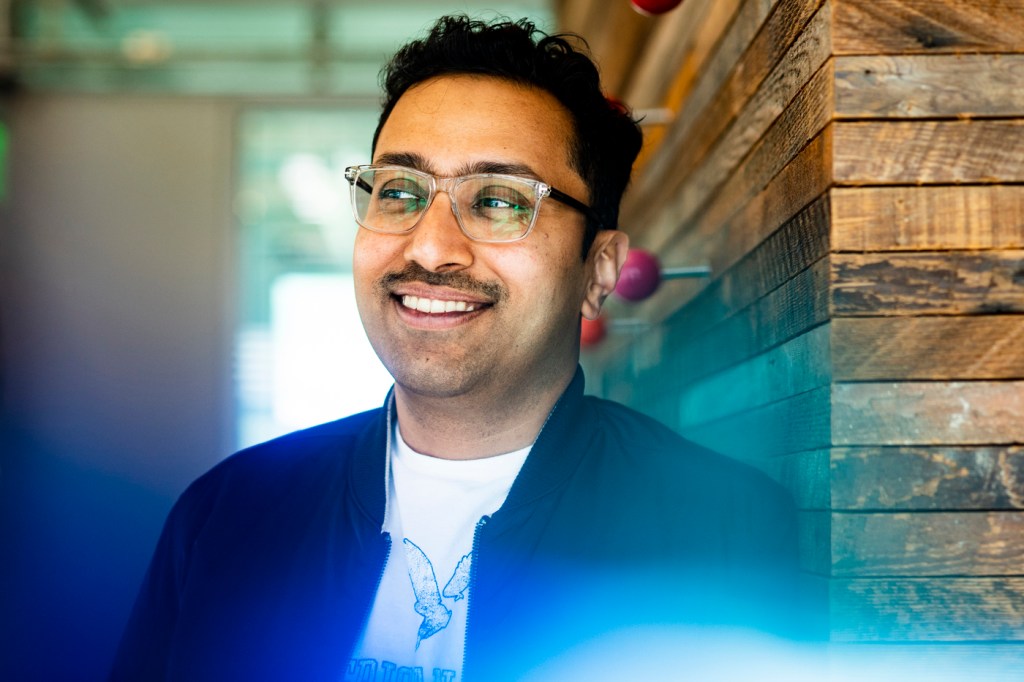Can AI help scientists slow the aging process?

Aging happens. While the rate may vary from species to species and even person to person, targeting aging may extend the average life expectancy more than prevention or treatment of diseases, according to Northeastern experts.
Researchers and pharmaceutical companies continue to search for treatments for chronic diseases such as cancer, heart disease and diabetes. But while medicine has helped reduce mortality, it doesn’t look at the larger picture of aging.
Aging plays a crucial role in the onset of many diseases that affect the body’s organs.
Preventative measures to treat aging at the molecular level may provide more benefits than reactive therapeutic approaches that target a single disease or organ—which do not extend lifespans, says Ramkumar Hariharan, a senior scientist at the Institute for Experiential AI at Northeastern University.
Hariharan focuses on human longevity, advanced statistical data analyses, data visualization, and machine learning. He also has experience in building AI applications, with research directed at using large and genomic datasets in biomedicine.
“I think aging is the emperor of all maladies,” Hariharan says.
Even if scientists cure cancer, the most it would add to the average life expectancy would be two to three years, Hariharan says. Why? Because, like in the movies, if cancer doesn’t get you, something else will—such as a car crash, heart disease or Alzheimer’s.
The reason is that “aging is the single biggest risk factor for developing any one of these diseases,” Hariharan says. “If you can slow down aging, you get a life-expectancy increase of 30 to 35 years.”
So, what exactly is aging other than another day closer to your next birthday? Hariharan defines it as things falling apart at the molecular level, at the cellular level, and the organismal level.
The chances of getting diseases increase as one ages and other functionalities decrease, such as the body’s immune system—meaning the older you are, the more likely you are to get infectious diseases.
A scientific hypothesis states, “Aging is one of the biggest risk factors for developing any of this plethora of diseases,” Hariharan says. “By slowing down aging or by halting aging, or in the ideal case reversing aging, you must be able to prevent or stave off the initiation of these diseases.”
Hariharan is interested in extending the health or cell span, which refers to the years of life that one spends not taking pills to stave off disease.
There may be a finite age in humans from 120 or 130 years old. After all, Jeanne Calment lived to be 122 years old and is considered to have lived the longest life. But what will it take to get there? Unfortunately, the answer is still unclear.
That’s where artificial intelligence can help.
With the help of Pramod Nagare, a senior data engineer working at Northeastern’s Institute for Experiential AI’s Solutions Hub, Hariharan explained that they are creating a “toolbox” for biologists studying longevity to input their data and receive meaningful insight.
Called the Artificial Intelligence Longevity Toolbox, or AI-LOT for short, Nagare explained that the AI-assisted program will make it easier for biologists to understand their data.
A prototype of the toolbox will be available to the public in about six months and the team is hoping to build out AI-LOT within three years.
“Biologists don’t have to look into the technical aspect of what’s going on behind the scenes,” Nagare says. “However, at the same time, they’re getting a feel about knowing their data in much more detail through exploratory data analysis.”
There are three main tools Nagare and Hariharan are developing. The first uses data in predictive analytics, allowing researchers to see what will happen next in a pattern of data. The second is a hub of research on longevity medicine, allowing users to summarize key studies and ask questions on what medicines are the most effective.
The third use is to develop new drugs. For example, a researcher can narrow down a list of the best molecule candidates for a potential drug from a list of millions with the help of AI. The tool will also be able to suggest molecules that will work.
“Instead of completing a sentence, it can complete the structure of a molecule,” Hariharan says.
Measuring aging, such as using a thermometer for fever or a sphygmomanometer for blood pressure, is still being developed for biological age. The goal is to use data at the molecular level.
Beth Treffeisen is a Northeastern Global News reporter. Email her at b.treffeisen@northeastern.edu. Follow her on Twitter @beth_treffeisen.






